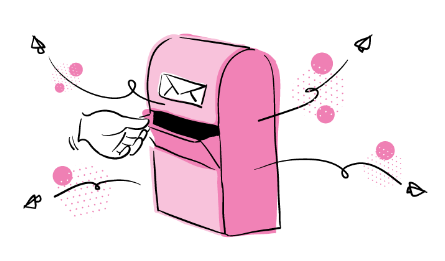Four strategies to boost Pharmaceutical Retail sales in the current contextMay 13, 2021Over the last year, we have seen a significant transformation in the customers’ habits and shopping style in pharmaceutical retailing throughout the region. For example, in Mexico, sales of the leading chains in the field increased by 13% in 2020 compared to 2019, mainly due to a higher average ticket, which in some cases increased by 21%. This increase reflects the main change in consumer behavior triggered by the current situation: fewer visits to physical stores but willingness to spend more on each purchase.
Visits to physical stores today are more planned,and customers are looking for products in XL formats, mainly for the hygiene and self-care categories. The time spent in the store has been reduced, seeking the highest possible efficiency, and limiting the time spent in the store.
All of these changes have generated a shift in impulse buying. It moved towards privileging the opportunity to anticipate later purchases, even in categories typically offered in other retail formats. Therefore, managing the profitability of shelf space and checkout counter or point-of-payment space requires recognizing the new customer purchasing decision process.
The new sanitary measures of capacity and distancing between people have resulted in standardizing waiting lines, both outside and inside the stores. In this scenario, new hot zones appear, such as the shelves alongside the waiting line. Hence the increased relevance of promotional activation at the cash register or point of payment, where traditionally featured products,special prices, and loyalty campaigns are displayed
Given the above, here are four key strategies that will help you boost sales in pharmaceutical retailing:
1. Focusing on customer segments by store cluster
Promotional activation should focus on the specific consumption preferences of the customers of each group of stores. It is necessary to have a better understanding of the communities’ compositionaround the stores.
Usually, loyalty programs and sales systems already manage the information and analysis needed to get these insights. For example, by analyzing customers’ buying habits through tickets and their tastes and interests, a greater capacity to generate strategies focused on them is achieved. Suppose psychographic variables, age groups, preferences in sports, whether more families come to shop at the store, etc., are added to the above. In that case, you attain a more robust data set thatwill help recognize the levers that move customers to convertand, consequently, identify the SKUs that each store cluster should be activating for each segment.
The impact of products and promotional activations is maximized by adding technology that providesvisibility into promotional implementation and store execution to ensure that efforts are executed as planned.
2. Generate movement through exhibits
As the customer journey at stores has changed, today’s hot zones are scarce. An excellent way to make them more profitable is to execute rotating displays, that is, to have agile activations that constantly vary. The products displayed change during the days and even on the same day, maximizing the visibility of the SKUs in the store’s hottest areas. These changes are tailored tocustomers’ needs, thinking about the consumer who frequents the store at a specific time or day of the week.
The rotational activation implies a big challenge for in-store execution. To support the stores, it is critical to have a technological platform that simplifies the reception and implementation of these activities, customized for each store. The orchestration of all these tasks is also an issue. There’s a rising need for coordination with centralized support areas, such as distribution centers, marketing, among others.
With a Task Manager in place for this process, it is possible to act and anticipate any potentialout of stock or lack of promotional material and ensure the correct execution of activations. The greater thecomplexity, the greater the risks, and the greater the need for tools to prevent deviations.
3. Excellence in customer service
Once the consumer is in the pharmacy, the touchpoints that fuel the perceived shopping experience are traditionally the in-store associates. The interaction between the customer contact employees and customers plays a critical role in evaluating the shopping experience. Therefore, it is essential that specialist personnel, such as chemist-pharmacists or dermo-cosmetics counselors, spend a significant portion of their time engaging with customers.
Considering this, the automation of routine activities and technologization of complex processes is highly relevant, as theyoften consume a high portion of specialized staff’s hours.
Less obvious but as important as the interaction with the in-store team is to use the same technologyto generate other mechanisms to communicate and establish closeness with the customer while in the store, respecting all existing sanitary protocols. The use of QR codes is now widespread both inside and outside the store, but it’s what you do with them that truly counts.
4. Omnichannel experience applied to the point of sale
Our current scenario requires generating more actions and greater diversity per store, increasing the interaction, relationships, and organization needed within the different responsible areas for proper
in-store execution. Retailers can count on dynamic and adaptable solutions such as Frogmi to support integrated management and achieve successful strategies for pharmaceutical retail.
People mainly recognize the omnichannel experience as the ROPO (Research Online Purchase Offline), which looks online and purchases in brick-and-mortar stores or showrooms.We propose connecting other channels from the point of sale to provide a complete face-to-face shopping experience with the brand.
In practice, these actions have had a positive impact on both channels. In the case of a Frogmi’s customer in the pharmaceutical sector, the average sales ticket of the remote channel doubled due to the additional sales generated during the call. There are many cases like this one. It is a clear example of the actions taken, leveraging various channels to improve the purchase experience and build customer loyalty

